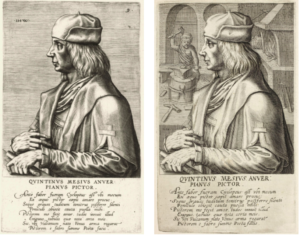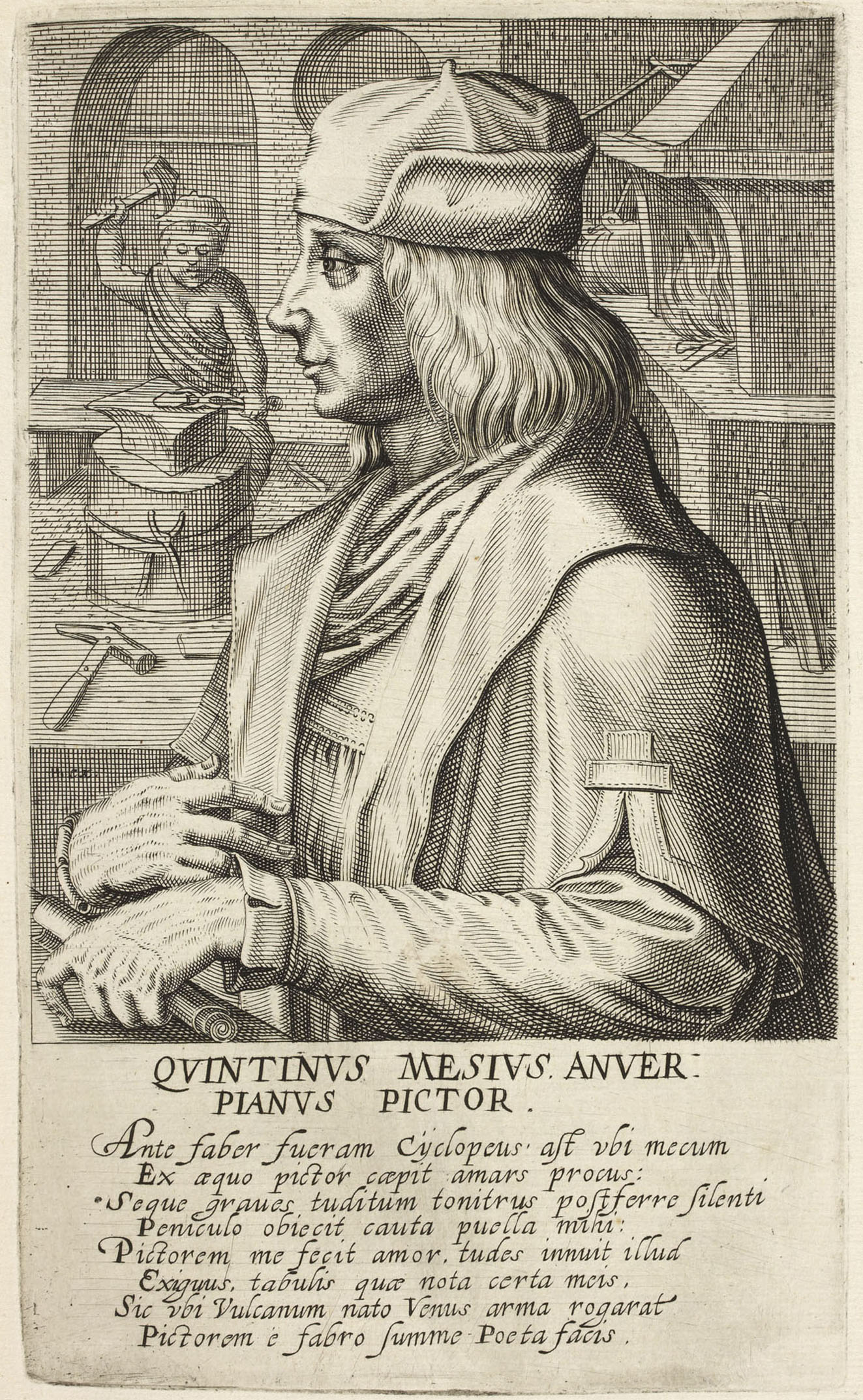Engraving
Signed ‘Hh ex.’ by Hendrick Hondius
Copy in same direction as Cock 1572 engraved Pictorum
20.4 x 12.0 cm
Transcription of Inscription [Lampsonius]:
QUINTINUS MESIUS. ANVER:PIANUS PICTOR.
Ante faber fueram Cyclopeus ; ast ubi mecum
Ex aequo pictor coepit amars1 procus :
Seque graves tuditum tonitrus postferre silenti
Peniculo obiecit cauta puella mihi :
Pictorem me fecit amor. tudes innuit illud
Exiguus, tabulis quae nota certa meis,
Sic ubi Vulcanum nato Venus arma rogarat
Pictorem e fabro summe Poeta facis.
Translation of Inscription [Lampsonius]:
To Quentin Matsys, painter of Antwerp.
Before I used to be a Cyclopean smith,2 but when a wooing painter began to love3 on an equal footing with me, and the cautious girl objected to me that she liked the heavy thundering of hammers less than the silent paintbrush, love made me a painter. A tiny hammer, which is the sure note of my paintings, alludes to this. Thus, when Venus had asked Vulcan for arms for her son, you, greatest of poets, made a painter out of a smith.4
Hollstein 1994 no.89
Karel Van Mander’s biography of Quentin Matsys
Grove Art Online biography

View the 1572 print
View both prints side by side
Footnotes:
- I am translating Lampsonius’ “amare”, not Hondius’ “amars”, which is not Latin
- Because the Cyclopes worked with hammers.
- See note 1
- The greatest of poets is Virgil, and the episode in question is Aeneid 8, 369-453 and 608-fin. The author seems to think of the images on Aeneas’ shield as paintings (Virgil himself does not say clearly how Vulcan made the pictures).


